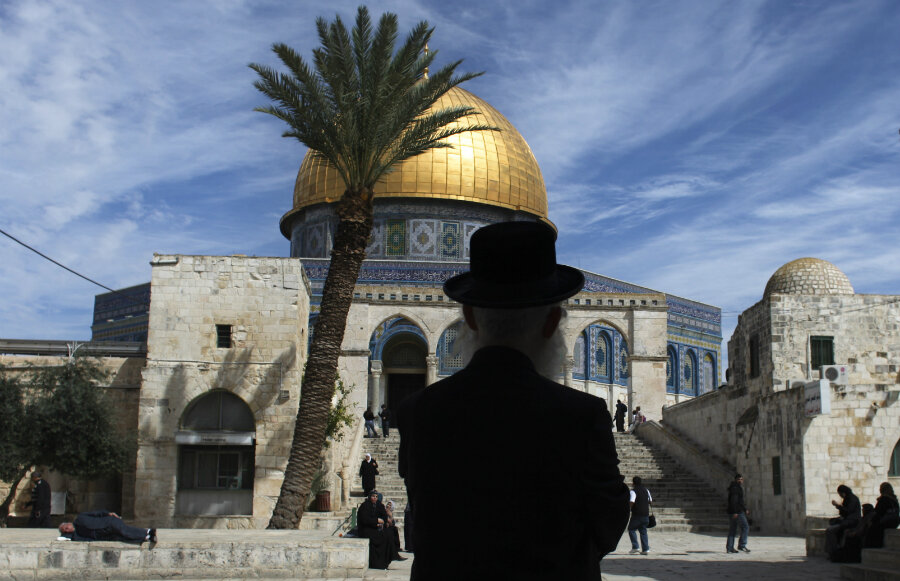After 2,000 years, archaeologists restore Temple Mount tile patterns
Loading...
Archaeologists in Jerusalem say that they have reconstructed part of the ancient stone floor of one of the holiest sites in the world, the ancient temple that Jews call Har HaBayit (Temple Mount), and Muslims call Haram al-Sharif (Noble Sanctuary).
It's first time that archaeologists have been able to successfully reconstruct elements of the site, known as King Herod’s Second Temple, which was constructed about 2,000 years ago. The temple was destroyed by the Romans during a Jewish rebellion in 70 AD.
"We have succeeded in recreating the actual tile patterns. This represents the first time that we can see with our own eyes the splendor of the flooring that decorated the Second Temple and its annexes 2,000 years ago," said Gabriel Barkay, co-founder and director of the Temple Mount Sifting Project in a press release.
The Temple Mount Sifting Project was founded in 2004 in order to help rescue antiquities from the earth on the site of the Temple Mount. The recovery of ancient segments of stone flooring through the project allowed researchers begin reconstructing the floor. Archaeologists involved in the project also used design patterns used by Herod at other sites to guide their work.
According to a Temple Mount project press release, 600 tile pieces have been found at the site thus far, and about 100 of them have been dated back to the Second Temple. Researchers say that the stone used in the tiles was imported from across the ancient world – with pieces coming from Asia Minor, Tunisia, Egypt, and Greece.
This particular type of flooring, known as "opus sectile," or Latin for cut work, was more expensive and grand than mosaic patterns. Herod's palaces at Masada, Herodian, and Jericho feature similarly opulent flooring.
"So far, we have succeeded in restoring seven potential designs of the majestic flooring that decorated the buildings of the Temple Mount," said Herodian tile expert Frankie Snyder in the press release. "The tile segments were perfectly inlaid such that one could not even insert a sharp blade between them."
The public will have a chance to view the restored tiles on Thursday, at the 17th Annual City of David Archaeological Conference.
Har HaBayit, or Haram al-Sharif, is located in the Old City of Jerusalem, in the West Bank. The area is home to high tensions among members of the different faiths that both cherish the old city, often making archaeological undertakings like those at the temple difficult.
The Christian Science Monitor’s Christa Case Bryant reported on those tensions in 2013, reporting that both Palestinians and Jews have attempted to use archaeology to prove the validity of their own cultures' historical narratives:
"It is a boiling caldron, the stew of which is stirred up by so many spoons," says Dr. Barkay. He cites the Chief Rabbinate of Israel (the supreme spiritual authority for Jewish people in the country), the Greek Orthodox Patriarchate, UNESCO, the city of Jerusalem, the Israeli Antiquities Authority, the Ministry of Foreign Affairs, the Ministry of Religious Affairs, and the Vatican.
When Muslims led by the Islamic Waqf, an Islamic religious trust, began removing truckloads of dirt from the temple site in 1999, Jewish archaeologists were upset. The dirt contained artifacts from ancient times.
The 1999 disposal of artifact saturated dirt sparked the Temple Mount Sifting Project, which has since employed thousands of volunteers to manually sift through dirt from the site, looking for antiquities.
The newly restored opus sectile flooring is among that project's greatest successes.
As Barkay says of the floor restoration, "we are now able to have a deeper understanding and appreciation for the Second Temple, even through this one distinctive characteristic."








